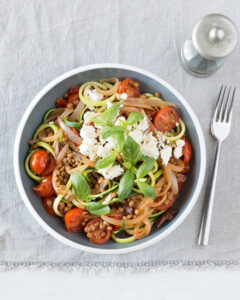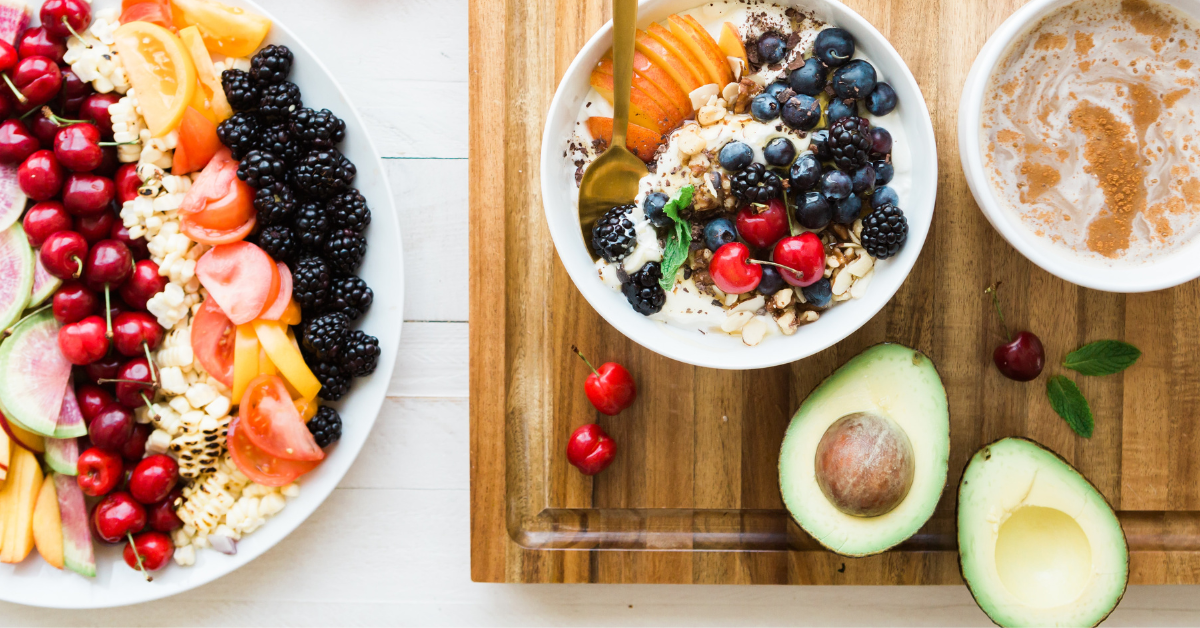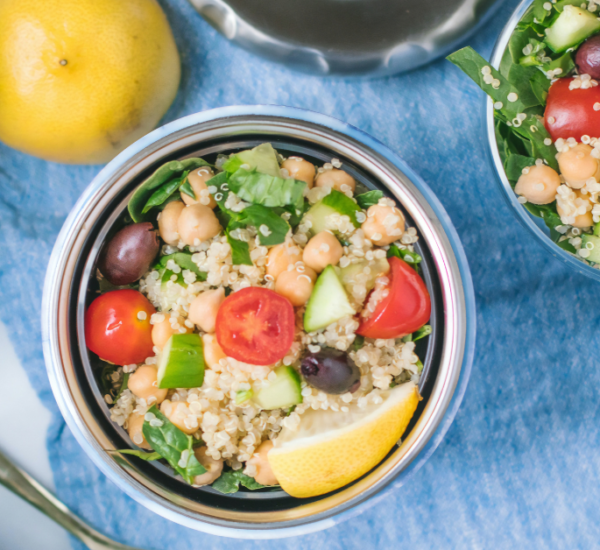With the summer heat coming to an end, we can enjoy the cooler months with seasonal fruits and veg are at their tastiest.
Autumn in Australia is a wonderful time to get fresh produce in an array of colours and get creative with some new nutritious recipes (we’ve include a few below for you!).
A shopping tip 101 is to buy produce when they’re in season so you can enjoy them at their peak ripeness where they’ll be fresher, often higher in nutritional value and generally cheaper!
Our 12WBT Rounds cater to the seasons so your meal plans are not only versatile but are smarter for your pocket.
Here are ten versatile ingredients that are in season over Autumn (March – May) – some of which extend into winter.
1. Broccoli
Broccoli (also known as mini-trees in our household!) is one of the world’s most popular veg! It can be eaten raw and cooked and the prep is very simple. It’s easy to see why people love it.
It’s high in many nutrients, including fibre, vitamin C, vitamin K, iron, and potassium.
Did you also know that it has more protein than most other vegetables (2.5g per cup)?
It contains plant compounds called isothiocyanates, which may have numerous health benefits. Studies suggest that Isothiocyanates affect liver enzymes, reduce oxidative stress, decrease inflammation, stimulate your immune system, and combat the development and growth of cancer. I know, some pretty hefty claims right!?
2. Dates
Dried and fresh dates are available year round, but the fresh type are best during the autumn season in Australia.
There are lots of different varieties of the fruit, but the medjool date is one of the best known, as it has a sweeter and stickier taste and texture than others. Nothing like a fresh date with an almond shoved in the middle… it tastes like a Snickers!
Delicious in smoothies, bliss balls, overnight oats, chia pudding and baked goods, you can incorporate dates in a mix of sweet and savoury dishes. They add natural sweetness and balance to spicy dishes.
You can also make date syrup by blending dates with water, this can be an excellent natural sweetener, with the added bonus of some fibre.
A very small study of found that date consumption may reduce colon cancer thanks to its high fibre and polyphenol content.
Also read: 10 Surprising Foods High in Fibre
3. Zucchini
Although zucchini is often considered a vegetable, it is botanically classified as a fruit. It occurs in several varieties, which range in colour from deep yellow to dark green.
It contains a variety of vitamins and minerals. Cooked zucchini is particularly high in vitamin A, though raw zucchini contains slightly less. In one cup of zucchini, there are just 17 calories, so adding extra zucchini to the plate when you are hungry is smart!

Plus it can help promote healthy digestion in several ways. For starters, it’s rich in water, which can soften stools. This makes them easier to pass and reduces your chances of constipation.
Zucchini also contains both soluble and insoluble fibre. Insoluble fibre adds bulk to stools and helps food move through your gut more easily, further reducing constipation risk. This benefit is compounded if you have enough fluids in your diet.
Meanwhile, soluble fibre feeds the beneficial bacteria living in your gut. In turn, these friendly bacteria produce short chain fatty acids that nourish your gut cells.
Convinced to throw this ingredient into your meals? Try this super simple Zucchini Pasta recipe.
4. Corn
Corn, what a legend vegetable. High in fibre and sweet, what’s not to love?
You can add corn to salads, soups, salsa, stir-fries… Or toss with olive oil, sea salt, and chipotle seasoning, or oven roast and dust with parmesan!
To grill fresh corn on the cob, pull down but don’t remove the outer husks, and pull off the silk. Fold the husks back into place and soak the corn in a tub of cold, slightly salted water. Remove, shake off the excess water, and grill for 15-20 minutes, turning every five minutes or so. Drizzle with pesto or seasoned tahini and ta-da!
Don’t forget popcorn as a superb snack! Serve it savoury with black pepper, turmeric, and sea salt, or sweet, drizzled with a little melted dark chocolate and cinnamon. Here’s one popcorn recipe your kids will love.
5. Apples
They saying goes an apple a day could keep the doctor away, and it’s because of the many amazing benefits behind this simple fruit.
Research in 2003 showed that overweight women who ate three apples a day lost 1.22 kg after 12 weeks and another showing that eating apples (or pears) regularly was associated with a 52 percent lower stroke risk.
A study published in February 2020 in The American Journal of Clinical Nutrition, found that eating two apples a day helped study participants lower both their LDL (“bad”) cholesterol and triglyceride levels.
Time to add this superfood to your lunchbox more often!
6. Figs
Figs are one of our favourite fruits in the 12WBT kitchen and they are so darn pretty! They’re filled with hundreds of tiny seeds, and have an edible purple or green peel. The flesh of the fruit is pink and has a mild, sweet taste.
One small fresh fig contains 30 calories as well as small amounts of a wide variety of nutrients – but they’re particularly rich in copper and vitamin B6.

They contain fibre, which may help promote digestive health by softening and adding bulk to stools, decreasing constipation, and serving as a prebiotic, a food source for the healthy bacteria populating your gut.
A study in 150 people with irritable bowel syndrome with constipation (IBS-C) found that those who consumed about 4 dried figs (45 grams) twice daily experienced a significant reduction in symptoms including pain, bloating, and constipation — compared with a control group. Pretty neat for a small fruit!
7. Beetroot
Beetroot can be a hit or miss with some but it is so versatile to cook with. You can juice, roast, steam, or pickle beetroots. You can even enjoy them raw, either sliced thinly or grated.
A pro tip when shopping for these fresh: choose beetroots that feel heavy for their size.
Here are some delicious and interesting ways to add more beets to your diet:
- Salad – Grated beets make a flavourful and colourful addition to coleslaw or other salads.
- Dip – Beets blended with Greek yogurt and fresh garlic make a delicious, healthy, and colourful dip.
- Juice – Fresh beetroot juice is typically better than store-bought versions, which can be high in added sugar and contain only a small amount of beets.
- Leaves – You can cook and enjoy fresh beet leaves similarly to how you’d use spinach.
- Roasted – Wedge beetroots and toss them with a little olive oil, salt, pepper, and herbs or spices of your choice. Then, roast them in a hot oven for 15–20 minutes until they’re tender.
8. Oranges
Specifically the navel orange variety, but these, juicy, sticky and delicious citruses are – you guessed it – a great source of vitamin C!
One 140-gram orange covers 92% of your daily vitamin C needs. Your body uses vitamin C it for immune function, collagen synthesis and iron absorption. It’s super fruit must-have when the weather is cooler and the common cold and flu seem to be on a rise.
Like most fruits, oranges mainly comprise carbs and water, contain very little protein and fat, and are relatively low in calories. They are a good source of fibre, 4.4g in one large orange.
Did you also know that oranges are a good source of folate? Folate is B vitamin that plays a role in metabolism, foetal and placental development.
Plus, oranges provide smaller amounts of other nutrients, including calcium, potassium and thiamine. Time to add some juicy oranges to your basket!
9. Strawberries
Did you know that 20 strawberries = 100cal? So low!
There is quite a bit of research showing strawberries may help prevent big spikes in both blood sugar and insulin levels. They are very low in carbohydrates, so a good choice for those needing to manage their carb intake.
They’re also a good source of many vitamins, minerals and plant compounds. In particular, strawberries are an excellent source of vitamin C, an antioxidant necessary for a strong immune system and skin health.
Low in calories, delicious, nutritious and healthy, they are super easy to blend in a smoothie, throw in a fruit salad or add some natural and healthy sugars to your breakfast.
10. Celery
Ah, the humble celery. Did you know celery is almost 95 percent water? It also contains generous amounts of soluble and insoluble fibre. Both of those support a healthy digestive tract and keep you regular. One cup of celery sticks has 5 grams of dietary fibre!
To get the most out of shopping for celery, here are some quick-fire tips for buying and storing the produce:
- Sturdy stalks – Look for celery that has sturdy, upright stalks. They should snap easily when you pull them, not bend.
- Crisp leaves – Leaves should be crisp and fresh, ranging in colour from pale to bright green. Avoid celery with yellow or brown patches.
- Wait to chop – Chop celery just before cooking or serving to maintain nutrients.
- Steam it – Steamed celery will retain flavour and almost all of its nutrients.
- Eat in five to seven days– Eat fresh celery within five to seven days to enjoy its maximum nutritional benefits.
- Don’t forget the leaves! You read that correctly! Don’t discard the leaves — that’s where celery has the most calcium,
potassium, and vitamin C. But because they don’t store well, consume celery leaves within a day or two of purchase.
Mish loves celery as a snack and likes to have it with some nut butter. How do you like your celery?
Want to sample of 12WBT’s delicious recipes with a FREE 7-day meal plan? Download your 7-day taster and see how you can transform your nutrition for the better.














